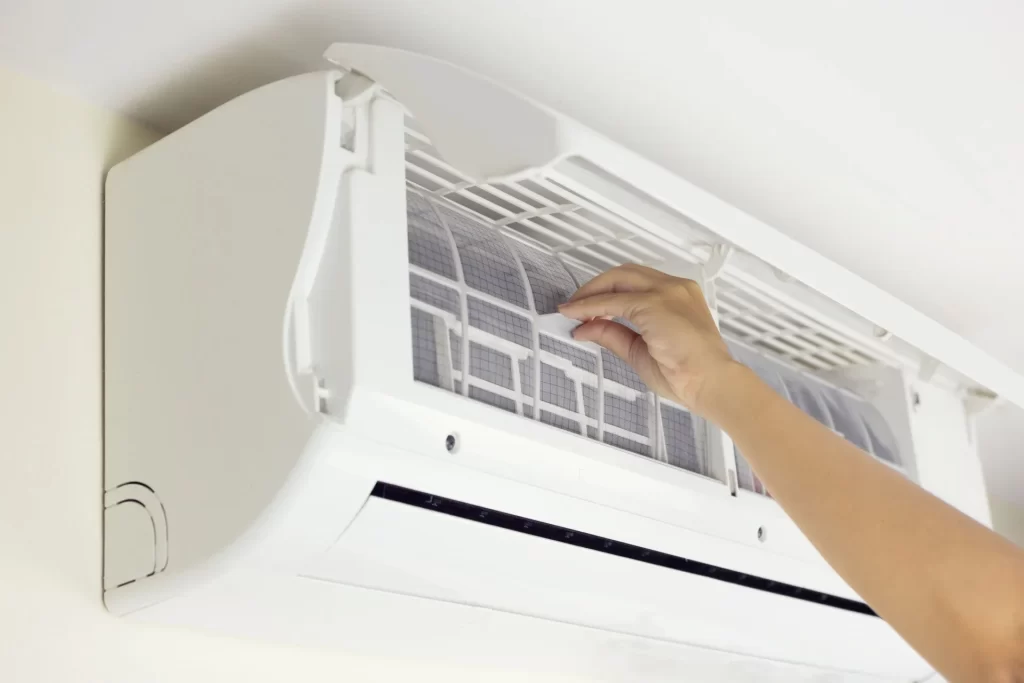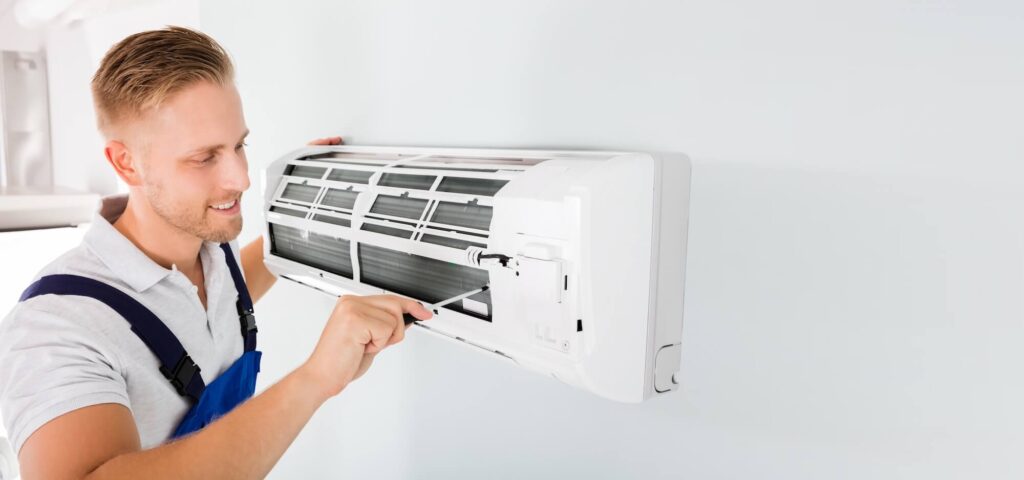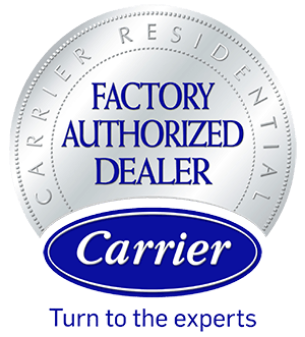Regular spring HVAC maintenance helps homeowners keep their systems running efficiently, lowers the risk of unexpected failures, and ensures comfortable indoor temperatures as warmer weather arrives. After months of idle use or heavy winter operation, HVAC systems can build up dust and wear, making early spring an ideal time for inspection and upkeep.
A simple home HVAC maintenance checklist—such as changing filters, checking outdoor units for debris, and scheduling a professional tune-up—prepares the system for summer demands. Homeowners who partner with experienced providers like Service Air Eastern Shore often see improvements in air quality and energy savings, while reducing future repair costs.
Knowing what to look for and which tasks matter most gives homeowners confidence and control over their indoor comfort. With just a bit of attention to seasonal HVAC system care each spring, they can extend the life of their equipment and avoid major disruptions when temperatures start to rise.
Why Spring HVAC Maintenance Matters
Spring maintenance is essential for keeping HVAC systems running smoothly throughout the year. It helps prevent breakdowns, supports efficient operation, and reduces long-term expenses for homeowners.
Protecting Your HVAC System’s Lifespan
Regular spring maintenance addresses critical wear and tear that accumulates during heavy winter usage. Tasks such as cleaning or replacing air filters, clearing debris, and checking components for early signs of damage prevent small issues from leading to major system failures.
By scheduling professional inspections each spring, homeowners ensure that problems like refrigerant leaks, loose electrical connections, and worn belts don’t go unnoticed. This proactive care can add several years to the HVAC system’s life.
Seasonal care also means that the system doesn’t need to work harder than necessary, reducing long-term strain. Consistent upkeep can delay expensive replacements and maximize the return on the original investment.
Energy Efficiency and Cost Savings
A clean and well-maintained HVAC system operates more efficiently, using less energy to cool or heat the home. Dirty coils, clogged filters, and unlubricated moving parts force the system to run longer cycles, which directly raises electricity bills.
Spring HVAC maintenance ensures that everything from thermostat calibration to ductwork is checked for optimal performance. This includes:
- Replacing dirty filters
- Cleaning evaporator and condenser coils
- Inspecting and sealing duct leaks
Simple maintenance steps like these help lower monthly utility costs and reduce the overall energy footprint. Over time, efficient operation can save hundreds of dollars.
Avoiding Unexpected Repairs
Unplanned breakdowns are disruptive and expensive, especially during the first hot days of the year. Spring HVAC maintenance identifies worn components and potential failures so that issues can be fixed before they become emergencies.
Technicians look for symptoms such as unusual noises, poor airflow, or moisture buildup, which often signal early trouble. This approach reduces the risk of needing urgent repairs during peak summer demand, when service calls can be more expensive and harder to schedule.
Preventative maintenance helps homeowners budget better, avoid the stress of last-minute fixes, and maintain comfortable indoor conditions without sudden interruptions.
Comprehensive Spring HVAC Maintenance Tips
A functional and efficient HVAC system depends on regular inspections and targeted upkeep. Homeowners can prevent costly repairs and maintain indoor comfort by focusing on a few essential maintenance tasks each spring.
Inspecting and Replacing Air Filters
Air filters play a central role in the performance and longevity of any HVAC system. Dirty or clogged filters restrict airflow, reduce efficiency, and can lead to poor indoor air quality. Most filters require replacement or cleaning every 1-3 months, depending on their type and household conditions.
Homeowners should locate the air filter in their system and inspect it for visible dust buildup or discoloration. If the filter is disposable, it should be replaced with one that matches the manufacturer’s specifications. Reusable filters can be washed with water and allowed to dry before reinsertion. Regular filter changes are an easy way to help the system run smoothly and keep allergens under control.
Quick Tips:
- Check user manual for filter type
- Mark replacement dates on a calendar
- Use high-quality filters for better air quality
Checking and Calibrating Thermostats
A thermostat that is not properly calibrated or functioning may cause inconsistent temperatures and higher energy bills. Homeowners should verify that the thermostat reads the correct room temperature and responds promptly to changes.
To begin, gently dust the exterior and check the battery or power connection if it is a digital model. Advanced models may require software updates or connection checks for programmable features. Use a separate room thermometer to compare readings and adjust calibration as needed, following the manufacturer’s instructions.
It may also be useful to program temperature settings around family schedules to save energy. Replacing old manual thermostats with programmable or smart models can further optimize comfort and efficiency.
Cleaning Coils and Condensate Drains
HVAC coils, both evaporator and condenser, are vital for heat exchange and cooling efficiency. When these coils collect dust, pollen, or other debris, the system must work harder and cooling power drops. At the same time, blocked condensate drains can cause water leaks and humidity problems.
Homeowners can gently vacuum exposed coils or use a soft brush for surface cleaning. For heavy buildup, a professional technician may need to use specialized coil cleaners. The condensate drain line should be inspected for blockages, and any visible clogs should be removed with a wet/dry vacuum or by flushing the line with a dilute vinegar solution.
Lubricating Moving Parts
Moving parts within the HVAC system, such as motor bearings and fan assemblies, require regular lubrication to prevent wear and avoid unnecessary noise. Lack of lubrication can cause mechanical stress and shorten the lifespan of critical components.
Homeowners should first check if their specific model has oil ports or sealed bearings. Non-sealed parts should be lubricated with the appropriate oil indicated by the manufacturer. Apply only a few drops to each port or moving joint, taking care not to over-lubricate, as this can attract dust.
Routine lubrication helps keep the system quiet and reduces the risk of mechanical failures during peak usage. If unsure about the process or type of lubricant, consulting the system manual or an HVAC professional is advised.
Electrical and Safety Inspections
Proper attention to electrical connections and safety controls in HVAC systems helps prevent malfunctions and reduces the risk of hazards. Focusing on these key inspection points also supports system reliability and gives homeowners peace of mind.
Inspecting and Tightening Electrical Connections
Electrical connections inside HVAC units can loosen over time due to vibration and regular operation. Loose or poorly connected wires may increase the risk of sparks, system failure, or even electrical fires.
Homeowners or licensed professionals should inspect all visible wiring for signs of wear, corrosion, or discoloration. Each terminal, connector, and wire nut must be firmly attached. If any component looks damaged, it should be replaced immediately.
Tightening connections with the appropriate tools ensures optimal current flow and stable system operation. Attention should be paid to circuit boards, relays, and contactors. Performing these inspections with the HVAC system powered down is important for safety.
Examining Safety Controls and Settings
Safety controls protect both the equipment and the home. Common safety features include limit switches, overload relays, and pressure sensors. These controls need regular testing to ensure they respond correctly in case of abnormal conditions.
Check that all safety switches disengage or shut off the system during faults, such as overheating or short cycling. It is also important to verify sensor calibration and that set points match manufacturer specifications.
Thermostat settings should be reviewed and, if necessary, recalibrated. Faulty or improperly configured controls may result in poor performance or increased risk of failure. Regular tests and manual trips of critical switches help confirm correct functioning.
If any safety control does not work as intended, replacement or professional servicing is recommended before operating the system. Regular inspection is a key preventive step for maintaining a secure home environment.
Maintaining and Scheduling Professional HVAC Services
Effective spring HVAC maintenance improves system efficiency and extends HVAC lifespan. Homeowners benefit from a careful mix of professional inspections and ongoing at-home care.

Professional Maintenance From Service Air Eastern Shore
Professional HVAC maintenance by Service Air Eastern Shore ensures all critical system components function properly after winter. Certified technicians conduct detailed inspections, check refrigerant levels, clean evaporator and condenser coils, and inspect electrical connections. This reduces unexpected breakdowns during peak usage months.
Comprehensive HVAC services from Service Air Eastern Shore also typically include calibrating thermostats and examining ductwork for leaks. Leaks can undermine efficiency and raise energy bills. Technicians use accurate diagnostic equipment to detect hidden issues early, so small faults do not become costly repairs.
Regular visits build a maintenance record, supporting warranty compliance and helping track the condition of HVAC equipment through the years. Service Air Eastern Shore’s professionals are familiar with the specific requirements for Eastern Shore HVAC maintenance, using local experience to address climate-related challenges.
DIY HVAC Upkeep Between Visits
Homeowners can support system performance between professional appointments with simple DIY tasks. Regularly replacing or cleaning air filters—typically every one to three months—reduces allergens and maintains airflow. Clogged filters force the system to work harder, decreasing efficiency.
It is wise to keep the area around both indoor and outdoor units clean and unobstructed. Remove leaves, dust, or any debris within two feet of the outdoor condenser. Inside, make sure supply and return vents are open and not blocked by furniture. Periodically inspect for unusual noises, musty odors, or visible water near the unit, and record any concerns to discuss with service technicians later.
Routine monitoring makes it easier to spot and address small issues before they escalate. Follow manufacturer guidelines for minor tasks, but defer complex repairs to professionals to protect the HVAC system and maintain safety.
How to Schedule Your Maintenance Appointment
Booking a maintenance appointment with Service Air Eastern Shore is simple and straightforward. You can reach us by phone, online request form, or email to schedule it.
For best results, schedule professional Eastern Shore HVAC maintenance in early spring before demand peaks. Early booking gives access to preferred appointment times and ensures that your HVAC system is ready before sustained warm weather arrives.
When setting an appointment, have model numbers and any recent repair information ready. Mention specific issues you’ve observed, as this helps technicians prepare. Service Air Eastern Shore also offers maintenance plans, which can provide routine reminders and priority scheduling for ongoing care.





